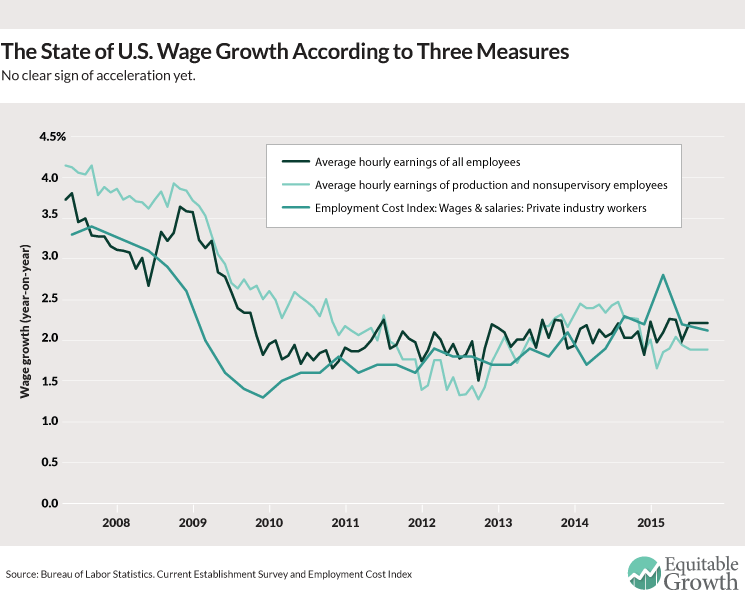Accelerating wage growth has yet to show up
Another quarter has gone by, and accelerating wage growth has yet to show up.
The Employment Cost Index, a measure of wage growth updated every three months, shows that wages and salaries for U.S. private-sector workers grew at a 2.1 percent annual rate for the third quarter of 2015. If that rate sounds familiar, it’s because annual U.S. nominal wage growth has been stuck at around 2.0 percent to 2.2 percent for the past several years. Despite some signs earlier this year that wage growth had been accelerating, that optimism hasn’t been borne out yet. Wage growth is still trucking along with no sign of acceleration. (See Figure 1.)
Figure 1

It’s worth pointing out that the measures above are in nominal terms, as they don’t account for inflation. The reason why the graph looks at nominal growth rates instead of inflation-adjusted rates is so we don’t confuse trends in inflation for a strengthening labor market.
For example, inflation in the United States has been quite low throughout the recovery from the Great Recession. By looking at nominal wage growth, we can see if employers are actually starting to bid up wages, a sign that the labor market is getting tighter. We would adjust nominal wages for inflation if were interested in determining whether living standards are on the rise. But to understand the health of the labor market, we need to focus on nominal growth. While a lack of nominal wage growth certainly sounds like a bad thing, though, there is a positive aspect to this trend. The current slow, steady nominal wage growth is a sign of insufficient aggregate demand and a remaining slack in the labor market. There are many U.S. workers who currently want more work but can’t get a job or extra hours. In other words, these workers can conceivably join the ranks of the full-time employed again. Wage growth is tepid because they are still a significant amount of working sitting on the sideline. Employment can go higher, and the unemployment rate can go much lower. Short-term policy can bring these workers into the mix. The issue, of course, is that policymakers would have to actually take those steps—or at least not step on the brakes of currently supporting policy.

